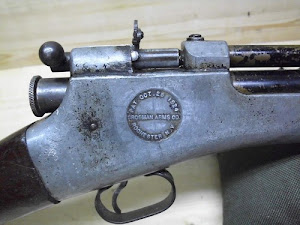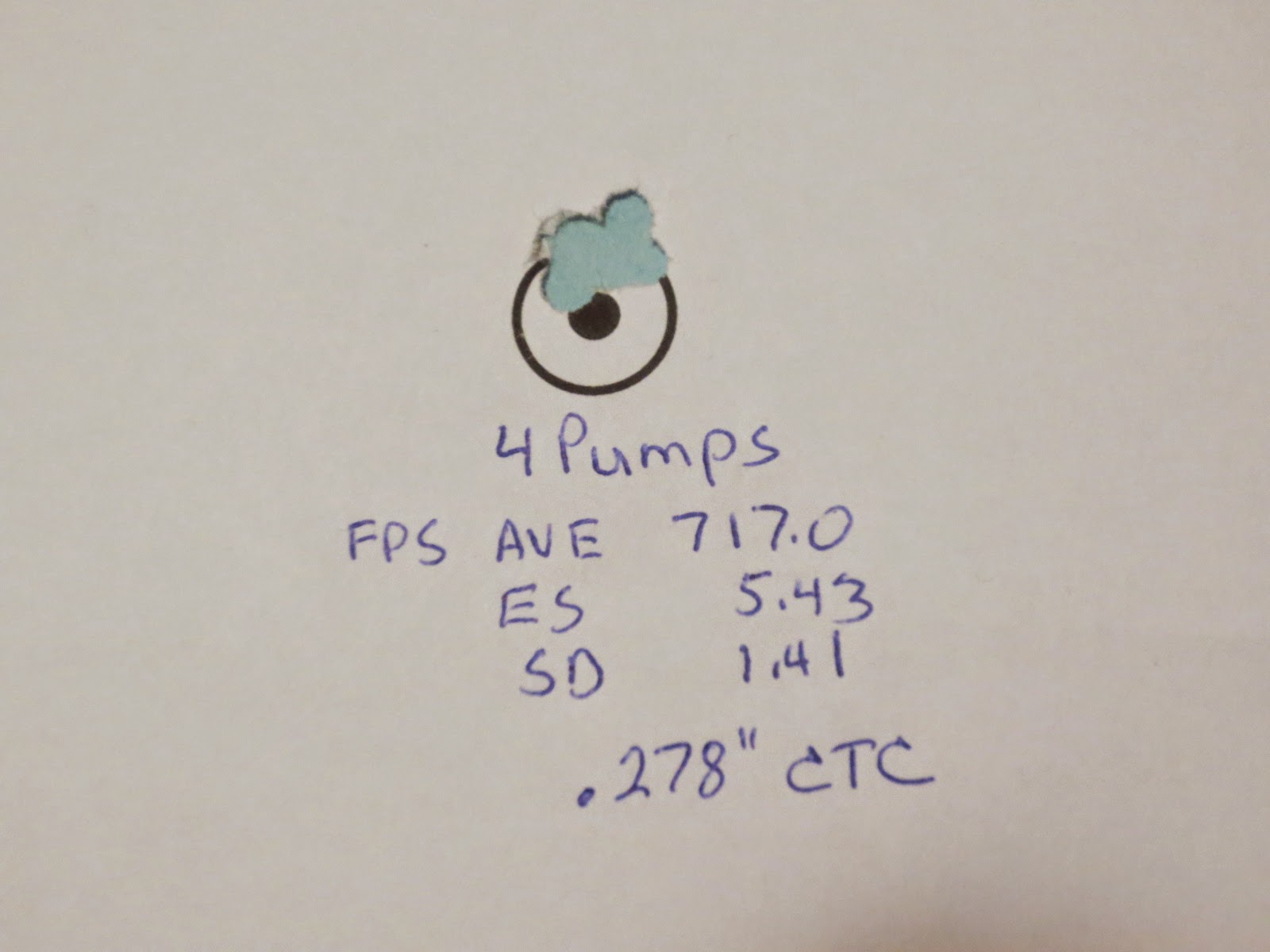Related Blogs:
Crosman exhaust valve repair
I have been thinking about this conversion for a while now. I'm not sure what sparked this idea, Tom Gaylords Blog about the $100 dollar PCP or a random question on one of the Airgun forums I frequent. I can't remember, but I'm going to give it a "shot" (pun intended).
Crosman exhaust valve repair
I have been thinking about this conversion for a while now. I'm not sure what sparked this idea, Tom Gaylords Blog about the $100 dollar PCP or a random question on one of the Airgun forums I frequent. I can't remember, but I'm going to give it a "shot" (pun intended).
My first thought was to use 12 gram CO2 cartridges since they are cheap and easy to get. I quickly gave up on this idea since it would require a tube larger than the 3/4" OD pump tube that comes on the Crosman pumpers and this would make the conversion much more complicated. So how would I keep the same size tube and still run this on CO2? Bulk fill is the answer, and a good one for me since I have the bottles and fill adapter that I use to run my Discovery on CO2. Another bonus is I will be able to try this project on HPA since I plan on using a Discovery fill fitting and I have a hand pump.
This conversion is pretty simple really, just replace the pump tube with a piece of 3/4" DOM tube, and add a fitting to fill the tube with CO2 or HPA.... there are a few other details but that is the basic idea.
I thought the 766 or 2100 would be a good candidate since the ones I've shot have been accurate shooters also I have rebuilt 4 or 5 of them so I'm pretty familiar with them.
During one of my visits to Gun Broker I came across an auction with a Crosman 140 and a 766 bundled together. Lucky for me the seller had misspelled Crosman so this auction went unnoticed by the other bidders and I got the rifles for a good price.
During one of my visits to Gun Broker I came across an auction with a Crosman 140 and a 766 bundled together. Lucky for me the seller had misspelled Crosman so this auction went unnoticed by the other bidders and I got the rifles for a good price.
I like this version of the 766 for the conversion since it is the first version which while it has the soda straw barrel the barrel is encapsulated in plastic instead of like the later models that the barrel floated inside a metal tube.
Another thing I like about this version is that the valve is integrated into the breech, eliminating the transfer port seal. One less place for a leak.
I wanted to get this 766 shooting as a pumper so I would have a baseline to compare to after the switch to CO2. The pump seal was shot along with the exhaust valve. With repairs done I put it back together and put some pellets over the Chrony, the 580 fps at 10 pumps was a little disappointing but only 50 fps below the advertised 630 fps in the owners manual.
CPHP aren't looking like the best pellet for accuracy, my favorite pellet RWS Meisterkugeln 7 grain didn't do much better
With the baseline established I'm ready to start the conversion.
The 3/4" DOM tube I'll be using for the reservoir.
The slots milled for the valve/ breech and for the sear.
I ordered a few parts from Crosman, a fill fitting and gauge. I'm not sure if the gauge will go on the 766 for sure, it depends on how it turns out...
The plug for the fill fitting is machined.
I installed the fill plug with socket head cap screws. The heads of the screws would have to shear off for the plug to come out. (Thanks to Big Bore Bart for this idea)
The valve is held in the tube by the two halves of the receiver, since I plan on trying this on HPA I added two screws to help hold the valve in.
Assembled and ready for the first shots on CO2. The good thing, it works! The bad, 14 shots dropped the velocity from 570 fps to 500 fps. I'm okay with the velocity but the shot count needs to be higher to make this worth shooting.
The original 766 hammer spring is meant to dump all the air in the valve with each shot. I replaced that spring with a 2260 hammer spring. That spring is a bit shorter and made from lighter wire. While I had the rifle apart I went ahead and drilled the center out of the check valve since it isn't needed to run this on CO2 or HPA.
These two changes made all the difference, velocity increased to 610 fps and the shot count increased dramatically. It now takes 40 shots for the velocity to drop down to 500 fps. I assume the increase in velocity came from disabling the check valve. CPHPs seem to like the 610 to 580 fps range. I got a nice round, dime sized group with the first 25 shots. I shot a second target once the fps dropped to 580. I shot 17 more times, I stopped when the velocity had reached 500 fps.
Happy with the results from CO2 it's on to HPA....
I started out with a 1000 psi fill. 12 shots dropped the velocity from a high of 678 psi to a low of 586 psi. The top target in the picture.
The lower target in the pic shows the results from a 1500 psi fill, 26 shots starting at a high of 735 fps down to a low of 566 fps.
I put the info from the Chrony into a spread sheet and printed out a graph. I think it is easier to see the performance with this visual representation.
The first 10 shots are pretty flat, slowly falling off after shot 12.
1800 psi nearly doubles the number of shots above 700 fps. shot #20 falls bellow the 700 fps mark and slowly falls off every shot after that.
Regardless of what the charts show the true test is where the pellets land on the target. I was still seeing fliers with the CPHP pellets so I got out the box of CPFT pellets I had just purchased to see what they would do. In the target bellow I shot 40 shots on a 1500 psi fill. 10 shots at each target. 35 out of 40 shots could be covered with a dime, 4 of the five that landed outside the dime size were the last four shots of the fill.
Since the CPFT pellets seem to work better I thought I'd switch back to CO2. 30 shots into a dime sized group. I shot the lower target with the last 10 shots, while the group is still dime sized it was starting to open up.
Since I'm calling this project done I thought I should put the front stock on. It took a little work with the Dremmel to get the barrel band to fit and the front stock will be held in place with silicone. Other than the fitting you can't tell it's been converted.
I'm happy with the way this project turned out, 30+ accurate shots at 10 yards on CO2! I prefer the self-regulating properties of CO2 over shooting with HPA. HPA has it's benefits, higher velocities and you can adjust the pressure for the best performance. Since most of my shooting is at 30 feet in my basement I'll power this rifle with CO2.
Thanks for reading!





















































